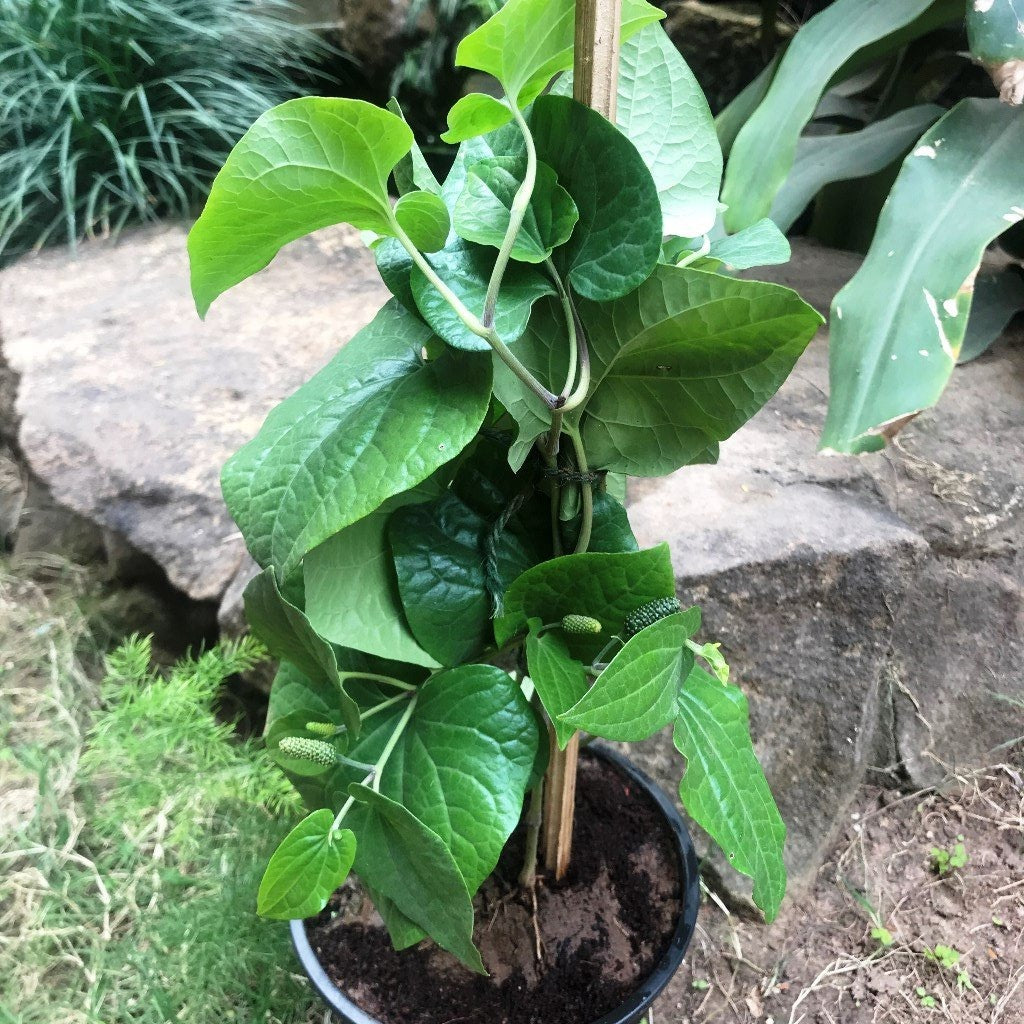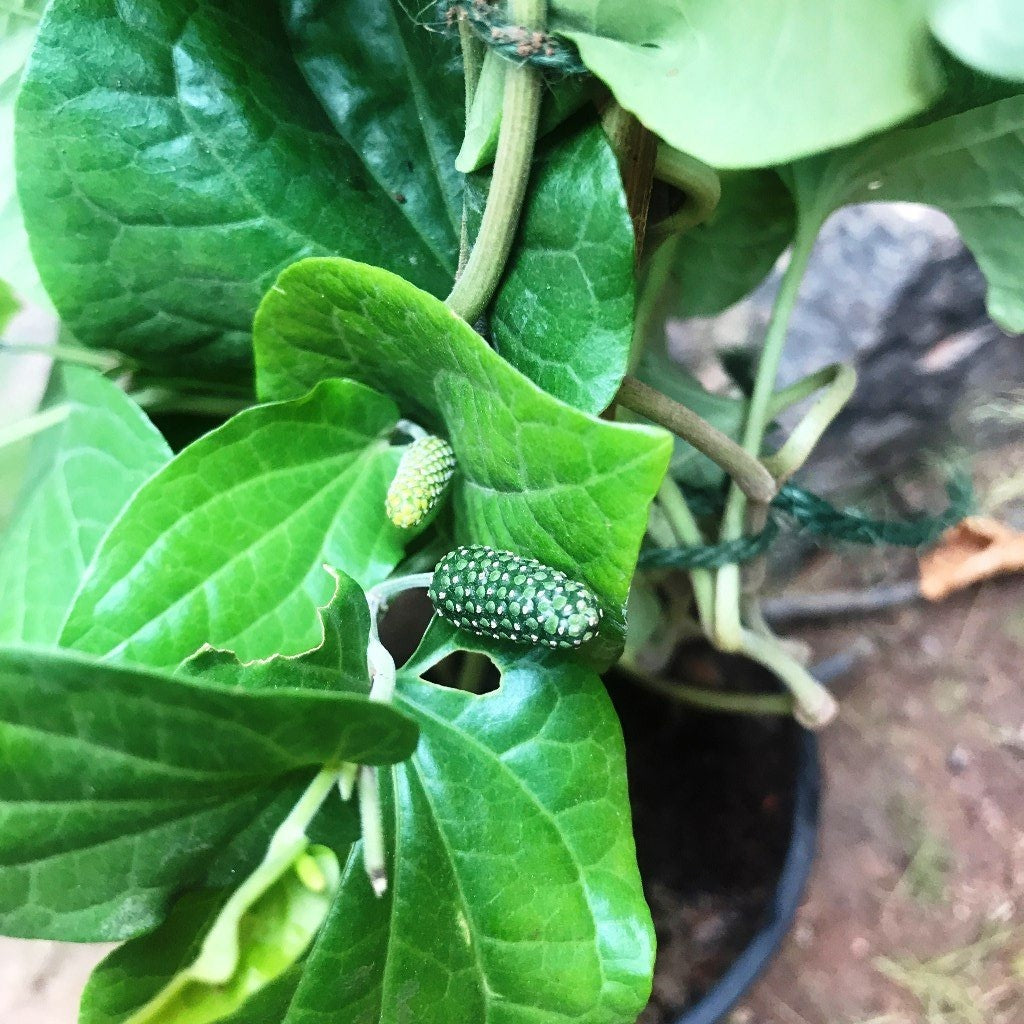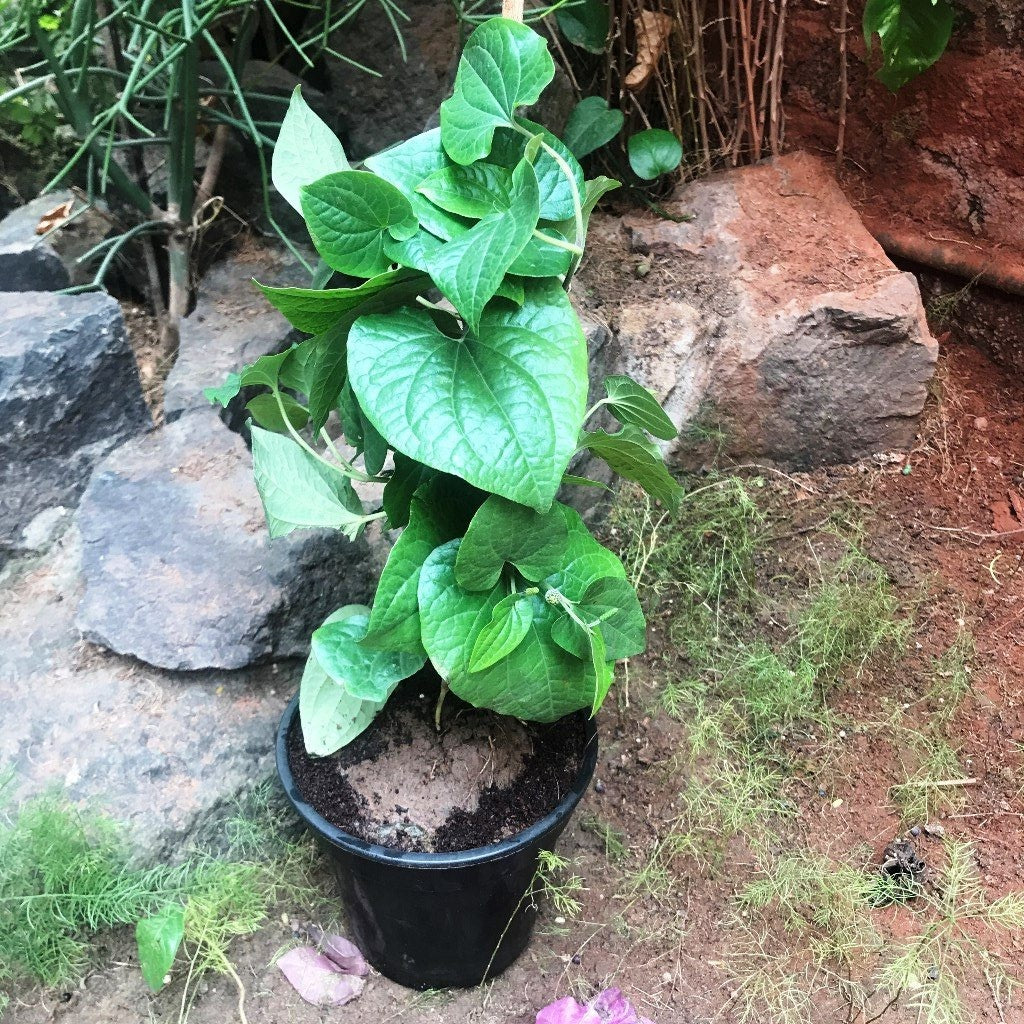Indian long pepper
Family
Piperaceae
Origin
Indonesia
Description
Long Pepper is a is a slender, aromatic, climber with perennial woody roots, creeping and jointed stems, and fleshy fruits embedded in the spikes.
The leaves are numerous, 6.3 to 9.0 cm, broadly ovate or oblong-oval, dark green and shining above, pale and dull beneath. The older leaves are dentate, dark in color and heart shaped. The younger leaf is ovate in shape and contains 5 veins on them.
Flowers are monoceous and male and female flowers are borne on different plants. Male flower stalk is about 1 to 3 inch long and female flower stalk is ½ to 1 inch long. Fruit is long. When it ripes it attains red color and when it dries it attains black color. It is one inch in diameter. The plant flowers in rains and fruits in early winters.
Long pepper is cultivated for its fruit, which is usually dried and used as a spice and seasoning. Long pepper is a close relative of the black pepper plant, and has a similar, though generally hotter, taste.
Environment
The plant is very hardy and it can be grown in subtropical and tropical climate Light medium sandy loam soil rich in organic matter, and with adequate drainage, is suitable for its cultivation. It does not tolerate high rainfall or waterlogged conditions.
The plant requires support to grow, which can be provided by raising wooden stakes or trellis . Being a large twiner, it needs a host to twine and covers the host in a very short period. If the stem cuttings with aerial roots are thrown over trees, they start growing and strike roots in the ground. Neem and Mango trees are most suitable host . Such plants are supposed to possess better medicinal values.
Landscape Uses
Ideal & a very useful herb to be grown in the garden.
























